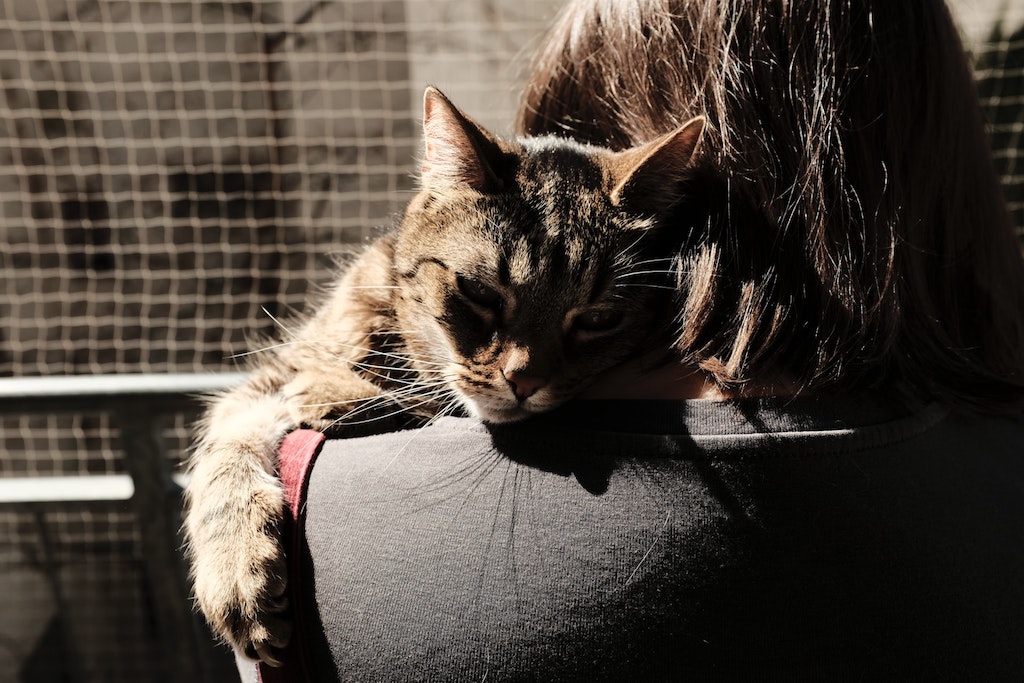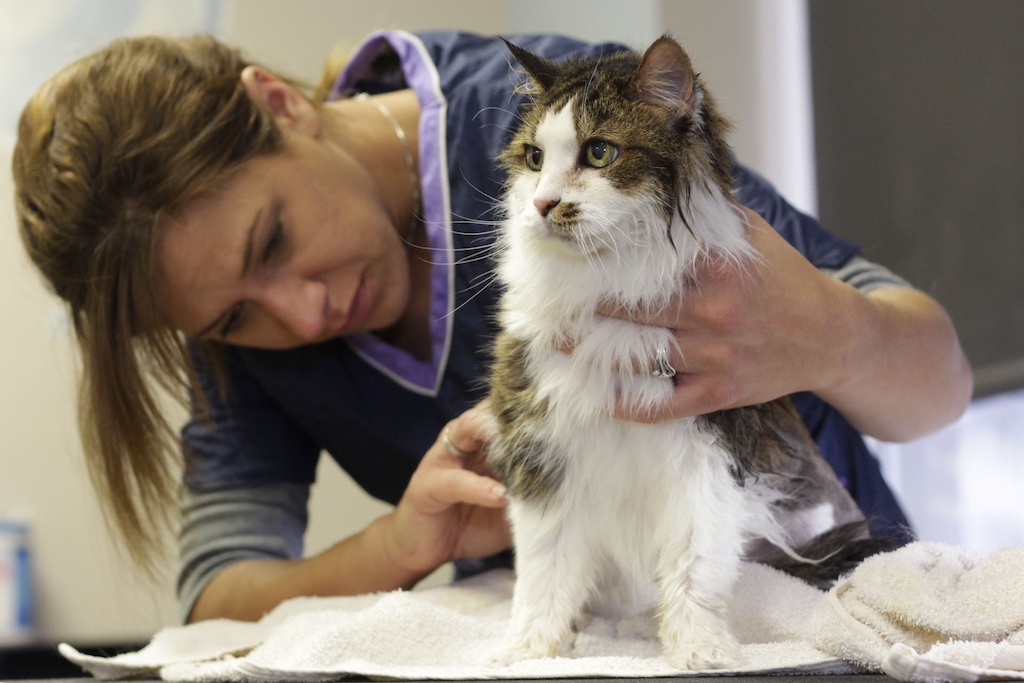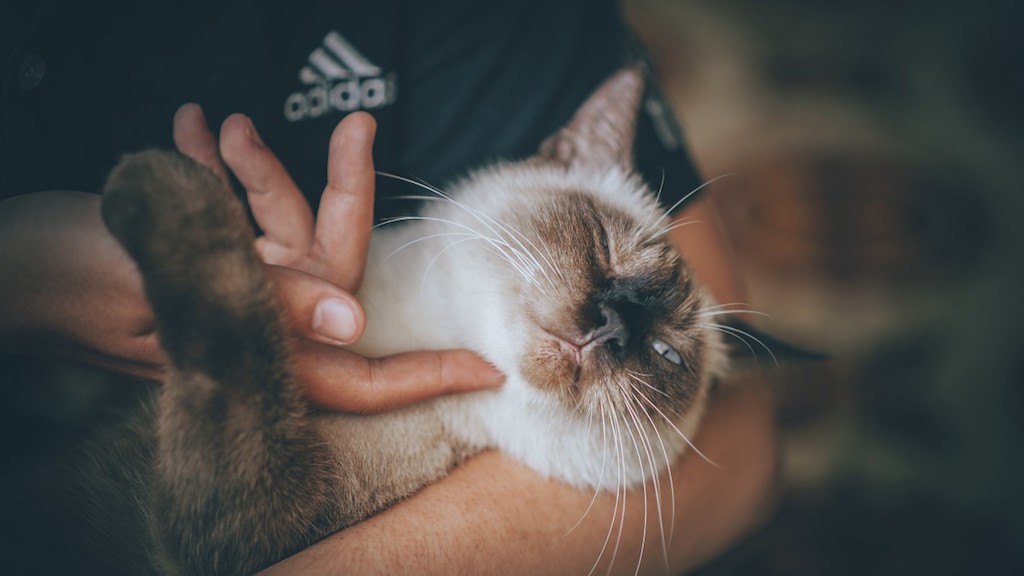As a cat parent, learning about cancer in cats may be difficult. However, if you want to be careful about your cat’s health, you must learn about everything that could potentially harm them.

Cancer in cats is very common, almost as common as cancer in dogs. It is the number one cause of the increased mortality rates in cats. And what’s worse is that like most cancer strains in humans, cat cancer symptoms do not show until the cell tumors have metastasized. Nevertheless, this doesn’t mean there’s no way to treat cancer. Cancer can be caught early if you monitor your cat’s health regularly.
As any cat parent knows, cats rarely show discomfort and are very good at hiding symptoms of illness. It’s up to you to keep an eye on their health and look out for any unusual bumps or lumps.
Types of Cancer in Cats
There are four types of cancers in cats, each of which can impact different parts of their body and may affect some breeds more than others:
– Lymphoma
Lymphoma is a form of blood cancer that develops in the cat’s lymph nodes. This type of cancer can be very dangerous because the lymphatic system maintains the flow of fluids in the body. This includes any cleansing toxins. When the cancer cells start developing in the lymph nodes, this causes the cancerous cells to spread throughout the body, which worsens the cat’s condition.
Many researchers in the veterinary industry believe that lymphoma is spread through contact with the Feline Leukemia Virus. However, there is evidence that Feline Immunodeficiency Virus (FIV) may also increase the cat’s chances of developing lymphoma. Fortunately, there is a vaccination available for this virus. As long as you get your cat regularly vaccinated, your cat’s risk of catching the virus will remain minimal.
– Mast Cell Tumors
Mast cell tumors are mostly benign or malignant. These are formed when white blood cells become tumors and start to swell. If you note any lumps or swelling on your cat’s body, a trip to the vet will confirm whether the tumor is risky or not.
Siamese cats are more likely to have mast cell tumors. However, even if your cat is of another breed, this won’t decrease their risk of incidence by much.
– Bone Cancer
While bone cancer in cats is rare, it’s not unlikely. Bone cancer spreads aggressively and can lead to several painful symptoms, including swelling, lameness, and lethargy.
Bone cancer is more common in giant or larger cat breeds. And unfortunately, researchers do not yet know why bone cancer develops. We know that primary bone cancer or tumors are uncommon in cats and more likely to affect dogs.
– Squamous Cell Carcinoma
Squamous cell carcinoma is a more common cancer that affects your cat’s skin. In addition to forming their skin cells, squamous cells form the digestive and respiratory tracks’ interior passages. When these cells develop cancer, they most commonly occur in the cat’s mouth or on its body. If your cat experiences mouth sores or its breath becomes terrible, that’s a strong indication of the carcinoma. The cat may also develop sores on its skin that may not heal.
Squamous cell carcinoma most commonly develops when the cat stays in contact with secondhand smoke.
Symptoms of Cancer in Cats
As stated before, cats rarely show signs that they are uneasy or in pain. However, this doesn’t mean that their bodies mimic their personality. In addition to feeling or seeing a bump or lump appear on their body, other factors that indicate cancer symptoms which you should watch out for:
Difficulty Chewing
Keep an eye out for any mouth problems your cat may have. But if it has difficulty chewing, constant bad breath, and doesn’t eat food the way it usually does, a checkup with a veterinarian may be in order.
Weight Loss
Of course, if your cat can’t chew, it can’t eat. But alongside, if your otherwise-ravenous cat suddenly stops eating and starts losing weight, you should be concerned.
Diarrhea and Vomiting
Although your cat may experience a rare stomach issue or vomit, it is not normal for it to do either of those. Cats have sensitive stomachs. You want to be sure that their digestive system is working smoothly. Anything else may indicate a problem.
Difficulty Breathing
Rapid breathing after a heavy play session is expected. However, fast breathing, difficulty breathing, or breathing heavily with its mouth open may indicate inflammation around or in the lungs and mean that the cat has fluid in its lungs, making it harder to breathe.
Lesions, Lumps and Bumps
Sores or bumps that don’t heal are common indicators of skin cancer in cats. However, your cat may also not have any bumps and sores but may exhibit other symptoms listed above.
Warning Signs of Cancer in Cats You Should Know
The above are physical symptoms that your cat may have. However, there’s more to cancer than that. When in pain or discomfort, your cat’s mood may change. It may become cranky, or clingier, or may disappear for days.
Remember, not all symptoms will show simultaneously. If your cat has even one of the above symptoms, you’ll want to keep an eye out for the following warning signs as well:
Excessive Hiding
Even if your cat isn’t overly social, it should still concern you if it starts hiding in small spaces and hard-to-reach spots. When cats don’t feel well, they try to hide so they don’t have to socialize. If your cat doesn’t even come out for food, take this as a sign that your cat is ill. It might not necessarily be cancer. But it could be something else, so a trip to the vet won’t hurt.

Nosebleeds
With cats, nosebleeds are nothing to sneeze at.
Nosebleeds can indicate an upper respiratory tract infection, but it may also indicate cancer. For younger cats or kittens, the likely cause could be trauma to the face (if they were playing) or a foreign object that’s stuck up in there. But, if you know that’s not the likely cause, take this nosebleed seriously.
Change in Bathroom Habits
As a cat parent, we can agree that we all partake in the not so attractive habit of checking our cat’s stool at times to ensure it’s not bloody or a troubling color. Put that investigative work to good use.
If your cat starts using the bathroom a lot, has difficulty peeing or pooping, defecates in a random area, or has blood in its stool or urine, take it to the vet immediately. Also, if your cat frequently vomits, it could be a sign that it either has an upset stomach or a hairball. But it may also be a sign of a GI (gastrointestinal) tumor.
Discharge
The average cat spends about five hours grooming and cleaning itself. Needless to say, cats like staying clean. But, if you start seeing excessive and persistent gunk and discharge coming from its eyes or nose, it may be a sign of a tumor.
Seizures
This is especially common among older cats that may have cancer. Seizures in cats may manifest as uncontrolled movement and activity. Your cat’s legs may start jerking or they may begin to foam at the mouth.
Your cat may also experience atypical seizures, meaning that they’ll exhibit strange behavior. They’ll bite or even scratch; they’ll start chewing or licking excessively. Or they may show extreme mood swings like hysteria or sudden rage. Be wary of these signs.
How is Cancer in Cats Diagnosed?
If you suspect that cancer may be the cause of the symptoms mentioned above, you will need to take your cat to the vet as soon as possible. They will take a few tests to diagnose the cat’s condition.
The veterinarian may take x-rays. They may also take an ultrasound around the location of the suspected tumor. In addition, they may also diagnose the tumor after they examine a sample of tissue taken by a professional pathologist. This may require a biopsy, which the vet will perform. However, they may also opt for other techniques if the cat is uncomfortable with such an invasive procedure such as biopsy. The veterinarian may also take blood samples.
But, if your cat has a specific type of cancer, for example, brain cancer, the vet may require an MRI scan or a CAT or CT scan to understand the condition of the tumor.

How is Cancer in Cats Treated?
Learning that your cat may have cancer is never good news. So you will need to be prepared.
As it is with human medicine, veterinary medicine does not have treatments for the different types of cancers. The veterinarian may offer numerous treatment options. However, your cat’s cancer may not respond positively to the therapy. Or they may become difficult to handle. Your cat may also experience pain, and its quality of life will suffer which is unacceptable.
So, you will need to speak at length about your options with the vet, whether you want to treat your cat, not treat them, and which options you should go with. Your veterinarian may suggest a specialty clinic or specialist center for treatment, which may offer good results.
If the prognosis is good, do not say no. The right treatment can significantly improve your cat’s health and can even prevent any further suffering. But, it may have some side effects. Nevertheless, if you know you can get good results, it’s best to have your cat treated.
Treatment Options
Your veterinarian will likely suggest a specialist in the field who has expert knowledge of your cat’s cancer. They may offer three treatment options:
- Surgery
- Radiation therapy
- Chemotherapy
The best option from these three will depend on the condition of your cat’s cancer. For example, what type of cancer it has, how much it has spread, where the tumor is located on the body, whether it’s appropriate for your cat, and if you can afford it or even access it.
The specialist may suggest surgery since it is the only treatment method that may cure your cat of its tumors. However, that can only happen if you get an early diagnosis. The surgeon will perform what is known as a curative surgery, meaning they’ll remove the tumor and the tissue around the cancer. They will also suggest another form of treatment, such as radiotherapy or chemotherapy, to prevent any further tumors.
If this option isn’t possible, your vet will recommend the latter two options.
How to Care for Your Cat While Under Cancer Treatment?
As you would with any patient under medical care, treat your cat with the utmost love and attention.
Keep records of your cat’s appetite, health, behavior and any other factors you think may need attention. Maintain its diet and nutritional intake and try to find food that will satisfy its dietary requirements. And talk to your veterinarian if your cat’s diet decreases.
Alongside, make sure your cat is not feeling any pain from its therapy. Your vet may provide other supportive treatment options such as painkillers, anti-emetic drugs, antibiotics, and non-steroidal anti-inflammatory drugs.

Always Monitor for Early Signs of Cancer
Your vet is well-experienced and well-aware of how important your cat is. But they also know when treatment may be a good option for your cat. If they believe the treatment will bode good results, do everything you can to follow their instructions. The most important thing for limiting the devastating effects of cat cancer is monitoring for early signs, in addition to ensuring your cat lives a healthy life. Hopefully, with the above information, you’ll catch the symptoms early on. But ideally, let’s hope you never have to live through the ordeal of every losing your dearest cat in your life to such an aggressive illness.










